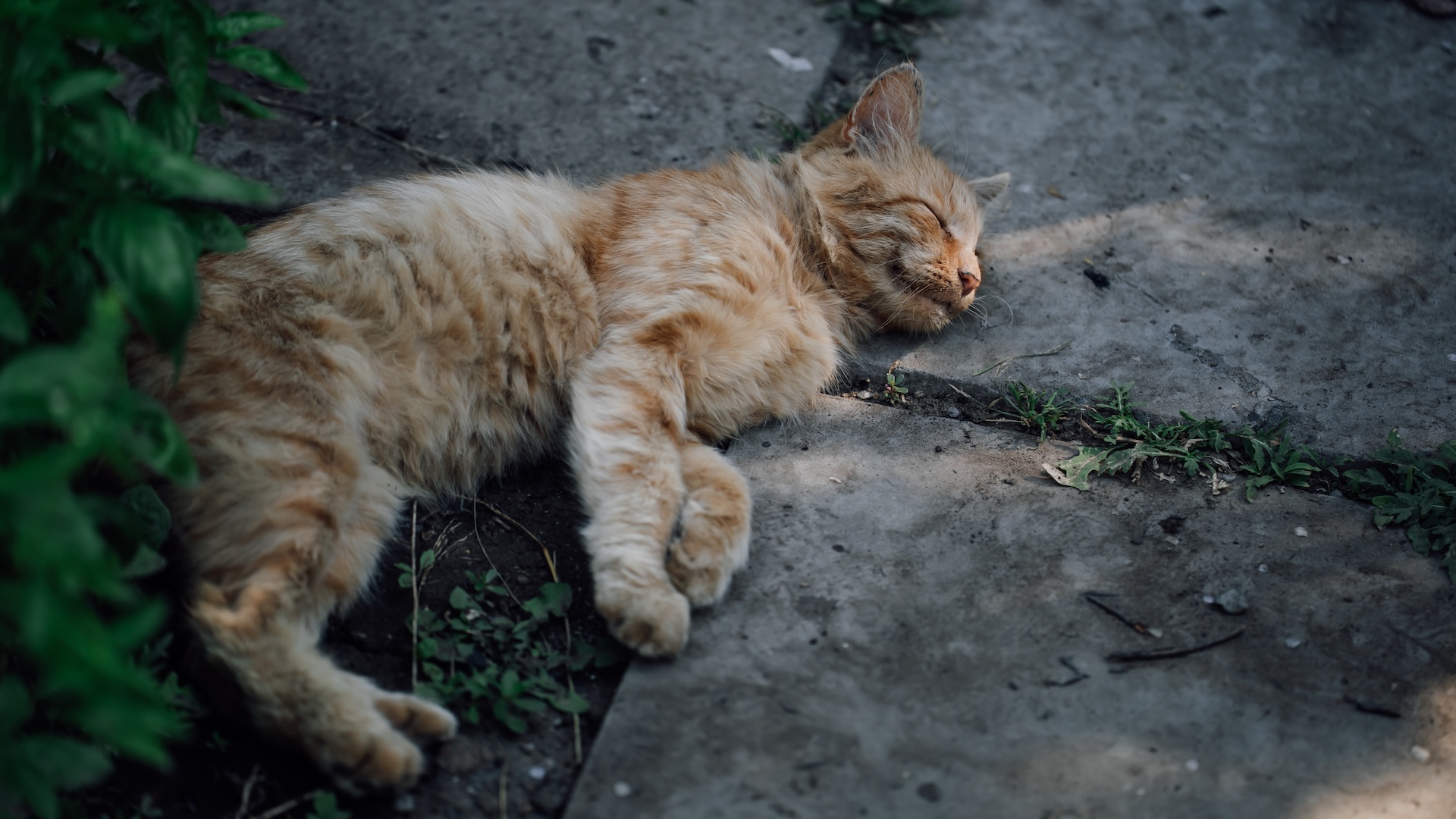Cat owners know that their feline friends can be a bit eccentric. From licking plastic bags to getting the zoomies, domestic cats certainly have some strange habits. Recently, some cat lovers have drawn attention to another strange fixation in their pets: an obsession with concrete. In fact, some cat owners have even brought rectangular concrete pavers from the hardware store home for their felines.
But why do cats love concrete so much?
There isn’t any direct scientific research about cats and concrete. But one expert does have a few ideas for why some cats love to lounge, scratch and roll around on concrete blocks.
According to Jonathan Losos, a professor of biology at Washington University in St. Louis and author of “The Cat’s Meow: How Cats Evolved from the Savanna to Your Sofa” (Viking, 2023), our feline friends are naturally curious, and they are likely drawn to the texture of concrete and possibly even its shape.
“Cats probably like the feel of the rough surface,” Losos told Live Science in an email. Concrete’s coarse texture allows cats to scratch and clean themselves, hitting parts of the body they couldn’t otherwise reach.
Concrete also provides a perfect place for cats to mark their territory, Losos added. Cats have scent glands, located all around their faces and bodies, that release pheromones. These pheromones are used to mark territory and send social signals to other nearby cats, and they’re released when cats rub those scent glands on objects.
Related: Why do cats make a weird face after smelling something?
In addition, cats from viral social media videos may be drawn to concrete blocks not because of the concrete itself but because they’re naturally inquisitive creatures, Losos speculated.
“I suspect they’d react at least with curiosity if you put any new object in their home,” Losos said. “To really examine this, someone needs to do an experiment.”
To tease apart whether cats are particularly interested in concrete or just curious about any new object, Losos suggested giving cats a concrete, block-shaped object made of smooth plastic instead, or a soft cat bed in the same shape. Then, the cats could be observed to determine whether it’s specifically the material of concrete the cats are drawn to, or if they’d interact with any novel, similarly shaped object.
Losos also wonders how much of cats’ reaction to concrete in viral videos has to do with the blocks’ rectangular shape.
“This also reminded me of the craze a few years ago of putting squares or rectangles on the floor, often just made by masking tape, and cats would sit within their borders,” Losos said. “This seems to be related to cats’ love of being in boxes.”
Cats like to hang out in boxes because the shelter brings them comfort. But their love for boxes extends beyond three-dimensional rectangular shapes — they also seem to enjoy two-dimensional box shapes.
In fact, a 2021 study found that cats will choose to sit within a two-dimensional illusion of a square, showing just how much they love lounging in rectangular spaces. Losos pointed out that concrete tiles are also rectangular, so they might trigger cats’ instinct to sit on the blocks.
To test whether cats are drawn to the concrete blocks’ shape, Losos suggested putting out concrete objects in different shapes and seeing which one cats interact with most.
“This is a fascinating phenomenon crying out for some good scientific research!” Losos said.
Cat quiz: Can you get a purr-fect score?
